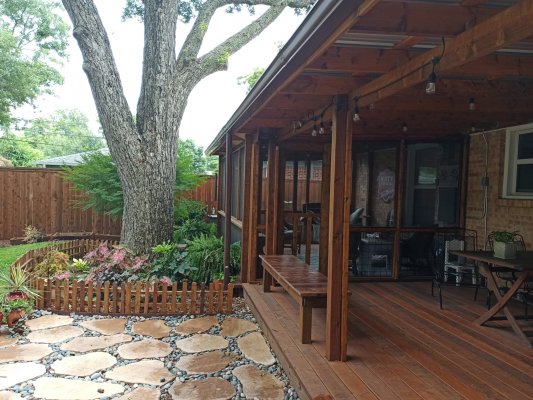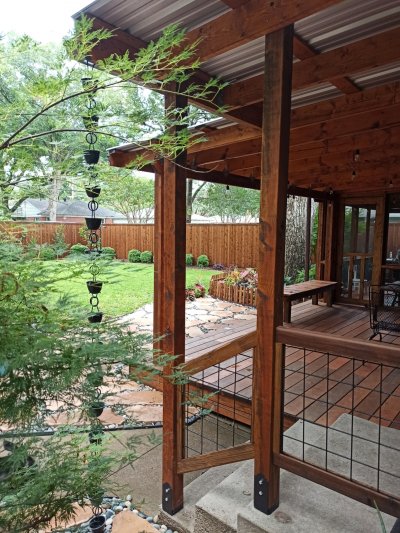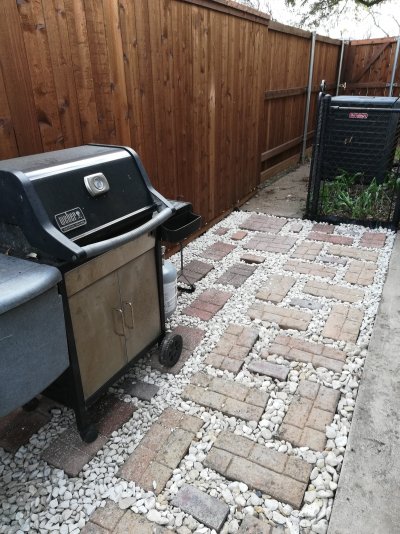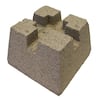eytonxav
Give me a museum and I'll fill it. (Picasso) Give me a forum ...
We have a rather small backyard, with our rear fence being only 15' away from the house. The existing patio is covered and indented into the house and is only about 9'x12'. We want to add a patio extension approximately 17'x 9' using either poured concrete or pavers, with a pergola covering this entire extension. Further will add a built in grill and stone sitting wall. We are just starting to get quotes, but I am wondering about the pros/cons of poured concrete vs pavers. The pavers certainly appear to be a more attractive option, but I worry about shifting/sinking. I am also wondering about my sprinkling system piping running underneath the patio or whether it would need to be relocated which I imagine would be the better way to go. I think we will also opt to put a cover on top of the pergola so the patio could be used when its raining. Anyone have any suggestions if you've done a patio upgrade project?




